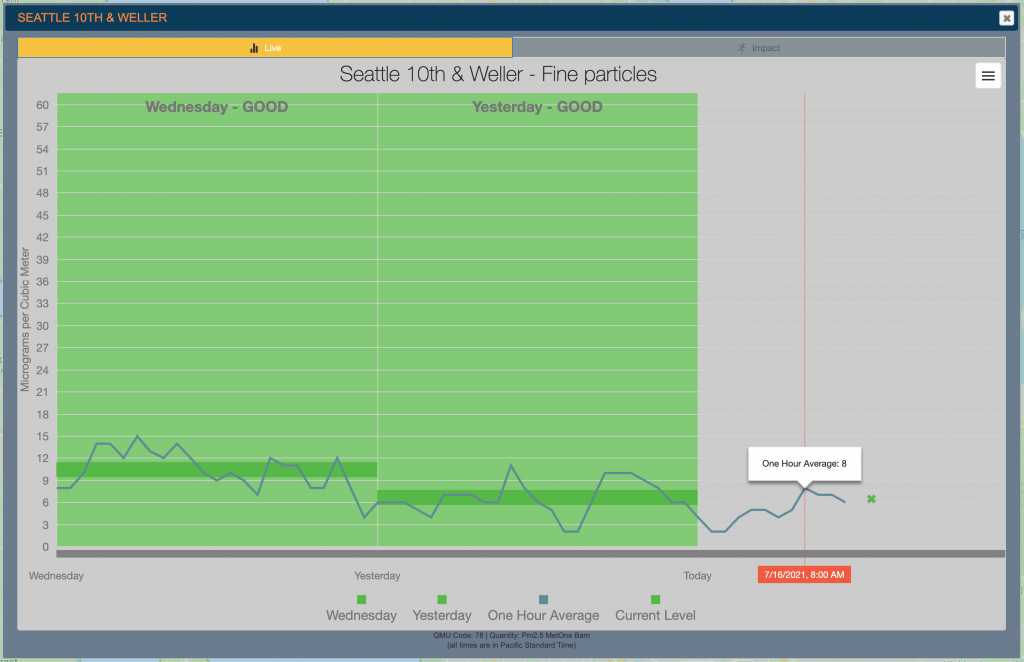In previous posts, I commented on the evidence for wildfire smoke protection for outdoor workers. Today’s release of Washington Labor & Industries’ new emergency rule has important distinctions from the previous draft rule:
- The new emergency rule has two action levels. Before working in PM2.5 concentration of 20.5 µg/m3 (AQI=69) employers must provide workers with information and training on wildfire smoke, and employers are encouraged to implement exposure controls. However, when the concentration reaches 55.5 µg/m3 (AQI=151) or higher, the employer must implement exposure controls, including making N95 or KN95 respirators available for voluntary use.
- The rule clarifies that the relevant PM2.5 concentration is computed using US EPA’s NowCast.
It’s interesting to note that 20.5 µg/m3 (AQI=69)is lower than the California rule, which also has two action levels. California’s rule triggers at 55.5 µg/m3 (AQI=151) for communication, training and instruction, and exposure control. However, there is a higher threshold at AQI=500, at which point, respirator use is required.
The clarification to use NowCast is helpful. This may be a point of confusion for some, but the hourly PM2.5 concentrations can vary from hour to hour, and thus exceed thresholds like 20.5 or 55.5 µg/m3. The NowCast considers more than just the current-hour’s PM2.5 concentration, but is a weighted average of the last 12 hours.
https://www.airnow.gov/aqi/aqi-basics/using-air-quality-index/
https://www3.epa.gov/airnow/aqicalctest/nowcast.htm
It will be interesting to see if the NowCast creates confusion in implementation of the rule, as not all air quality tools display the NowCast. For example, Puget Sound Clean Air Agency has a tool that seems to displays current hourly average PM2.5:

Moreover, there is a provision (Appendix A) in the Washington Emergency Rule thast allows employers to conduct their own monitoring, similar to the California Rule. There are some important clauses in the appendix about maintenance, calibration, and understanding of the limitations of direct-reading particle instruments. But, it’s not clear that people will summarize the measurements of direct reading instruments using the NowCast algorithm, or if they should do this for the rule.